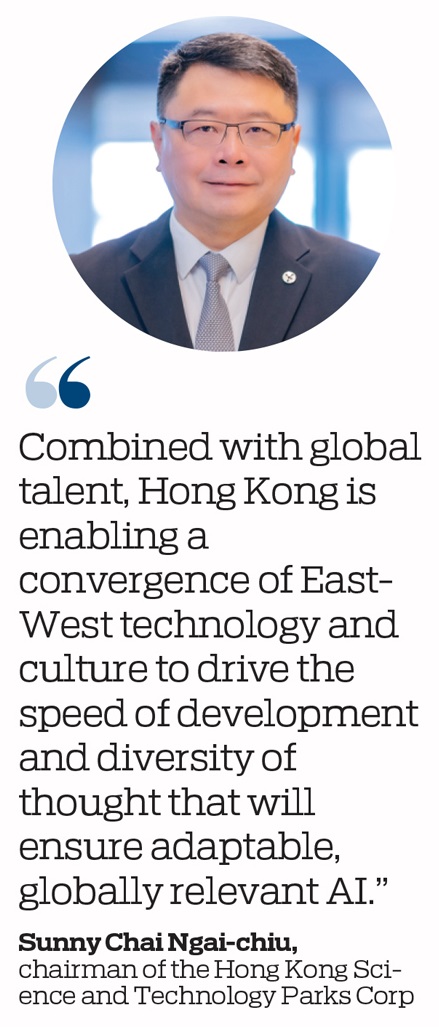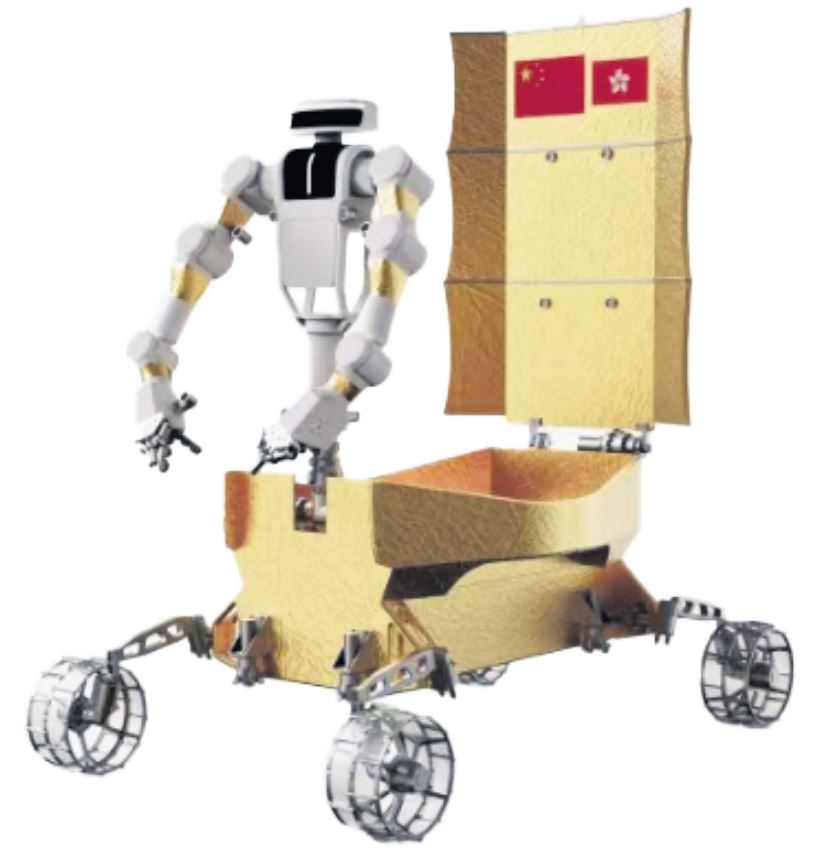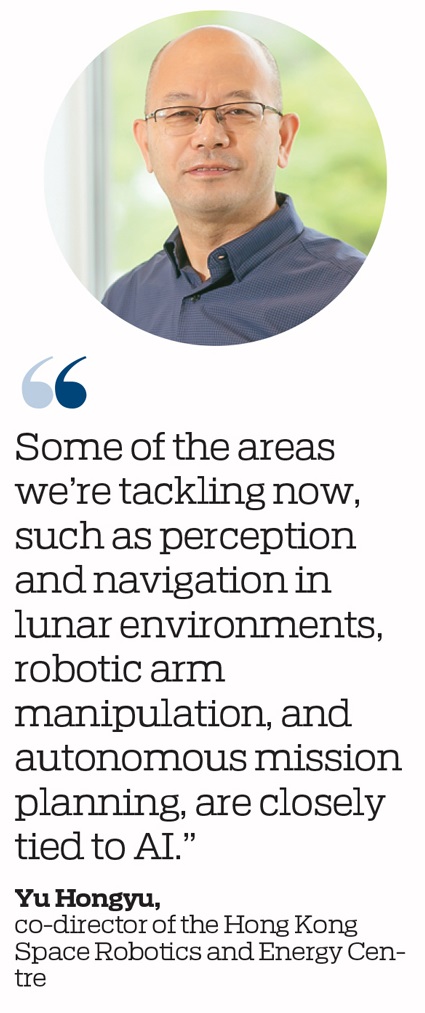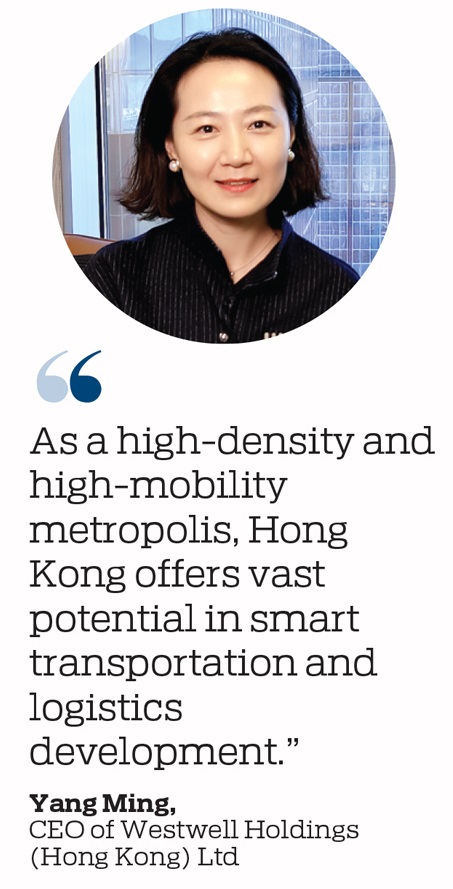As the embrace of artificial intelligence continues apace worldwide, Hong Kong is doubling down on its new tech prowess to become a crucible for testing the best global techno logical solutions.
Fueling the momentum of the special administrative region’s tech-powered future, Hong Kong Science and Technology Parks Corp (HKSTP) has joined hands with the Hong Kong Trade Development Council and Cyberport in spotlighting nine promising companies and their cutting-edge AI solutions at the World Artificial Intelligence Conference (WAIC) in Shanghai.
Since its inception in 2018, the WAIC has emerged as one of the most influential AI events in the global tech, science and industry ecosystem. This year’s edition, themed “Global Solidarity in the AI Era”, will be held in the nation’s premier financial metropolis from July 26 to 29.

HKSTP Chairman Sunny Chai Ngai-chiu is upbeat about Hong Kong’s emergence as a dynamic hub for global innovation, playing a pivotal role in unlocking the full potential of Chinese AI, not only by driving the country’s “AI Plus” vision to transform industries, but also helping to elevate Chinese AI on the world stage.
Yu Hongyu, co-director of the Hong Kong Space Robotics and Energy Centre, will join a panel discussion hosted by HKSTP at the conference.
Led by the HKUST, the HKSAR government’s Hong Kong Space Robotics and Energy Centre under the InnoHK Research Clusters located in Hong Kong Science Park, is playing a major role in the country’s Chang’e 8 mission by developing a multifunctional lunar surface robot with precise operation and wireless charging capability as part of an international collaboration project.

As one of the project’s key research personnel, Yu calls it the “largest aerospace research and development initiative Hong Kong has ever participated in”.
Together with the SAR’s long journey of taking part in national space missions, he says it’s also “the first time Hong Kong is leading a full-system project”, bringing together the research strengths of five local universities, while incorporating extensive collaboration with the Chinese mainland and overseas.

“Some of the areas we’re tackling now, such as perception and navigation in lunar environments, robotic arm manipulation, and autonomous mission planning, are closely tied to AI,” says Yu, who sees the WAIC as a strategic opportunity to present current progress and ongoing research priorities, and engage in meaningful exchanges with experts in the field.
Given the fast pace of innovation in AI, not all emerging technologies are readily applicable to aerospace. Yet, what can also be expected from the conference is to “explore the latest advances in intelligent control, autonomous learning, and integrated hardware-software systems, and identify promising directions for future convergence”, says Yu.
Digital Domain, the visual effects production company known for blockbuster films like Titanic and The Avengers series, has plenty in store for the WAIC. One of the highlights is an all-in-one platform for content creation driven by AI, named “AI DOMAIN”.
“We’re really looking forward to having useful exchanges with industry stakeholders about the transformative power of virtual humans and AI across various sectors,” says William Wong, CEO of Digital Domain.
Last year, the Hong Kong-listed firm set up an R&D center at Hong Kong Science Park in Sha Tin. It plans to invest HK$204 million ($26 million) in the facility by late 2029, expanding its team to 40 professionals.

The new R&D center focuses on virtual humans, powered by AI and its application in service-oriented environments, and pursuing the development of AI content production technology.
Digital Domain’s AI virtual human technology isn’t limited to visual effects and entertainment. The company is actively expanding AI virtual human applications across multiple sectors, including education, hospitality and care for the elderly.
Wong envisions AI virtual human technology as a tool that can enhance human experiences, whether through virtual companions, customer services representatives, or interactive learning platforms.
Westwell — a Chinese developer of AI-driven scenario-based logistics solutions for global clients — also has much to offer at the WAIC.
This year marks Westwell’s eighth consecutive appearance at the flagship event, where it will debut its new energy autonomous tractor, the Q-Tractor P40 Plus, and unveil its self-developed next-generation hierarchical intelligent model system, Hymala.

Yang Ming, CEO of Westwell Holdings (Hong Kong) Ltd, regards the city — one of the world’s busiest logistics hubs — as an “ideal testing ground” for the company’s AI and autonomous driving solutions.
“As a high-density and high-mobility metropolis, Hong Kong offers vast potential in smart transportation and logistics development,” she says.
The company’s autonomous driving technologies have been deployed across cargo terminals at Hong Kong International Airport and within the airport premises. It teamed up with e-commerce behemoth Alibaba’s investment affiliate in May to conduct field trials for its autonomous truck at Cainiao Smart Gateway logistics center in Hong Kong.
Leveraging the SAR’s strategic geographic advantages, Westwell Holdings (Hong Kong) Ltd has established wholly-owned subsidiaries in Singapore, Malaysia, the Netherlands and the United Arab Emirates to deliver localized solutions. In the first half of 2025, the group company further expanded its Q-Truck fleet at Abu Dhabi’s Khalifa Port.
Hong Kong’s strategic geographic advantages and unparalleled financial-commercial ecosystem prompted Westwell to establish its international headquarters and overseas R&D center in the city last year. But, Yang attributes the move to a more critical contributing factor — the SAR government’s unwavering commitment to the development of innovation and technology.
The new R&D center, located at HKSTP, capitalizes on the city’s growing allure as a magnet for top-tier global talent. It strategically focuses on building an intellectual property matrix for new energy-powered intelligent robotics in large-scale logistics scenarios, according to Yang.
This year’s WAIC offers a glimpse of the big innovation story unfolding in Hong Kong. “HKSTP will develop 20 hectares of new I&T land in the soon-to-be-built San Tin Technopole, we will push our world-class AI infrastructure to new heights and provide access to deeptech capabilities to further advance new quality productive forces,” says Chai.
“Combined with global talent, Hong Kong is enabling a convergence of East-West technology and culture to drive the speed of development and diversity of thought that will ensure adaptable, globally relevant AI,” he says.



